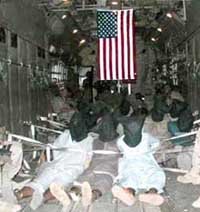(Written with Adnan Zulfiqar, and initially published in The Japan Times, Nov. 7, 2009)
The current debate in the United States over the war effort in Afghanistan contains no shortage of opinions on the best strategy for defeating the Taliban, but far too little discussion regarding the actual objectives of the war. The famous Prussian strategist Carl von Clausewitz wrote about war that “the political objective is the goal, war is the means of reaching it, and means can never be considered in isolation of their purpose.” But in the current debate on Afghanistan we risk doing just that — arguing about strategy without a clear understanding of our goals.
So what are the objectives in Afghanistan? What is the purpose for which we are fighting this war? The problem is that they have shifted over time. At the outset, the coalition invasion of Afghanistan was an act of collective self-defense in response to the 9/11 attacks. The objective was to prevent further attack by disrupting and destroying al-Qaida forces operating out of Afghanistan, and overthrowing the Taliban regime that supported them.


